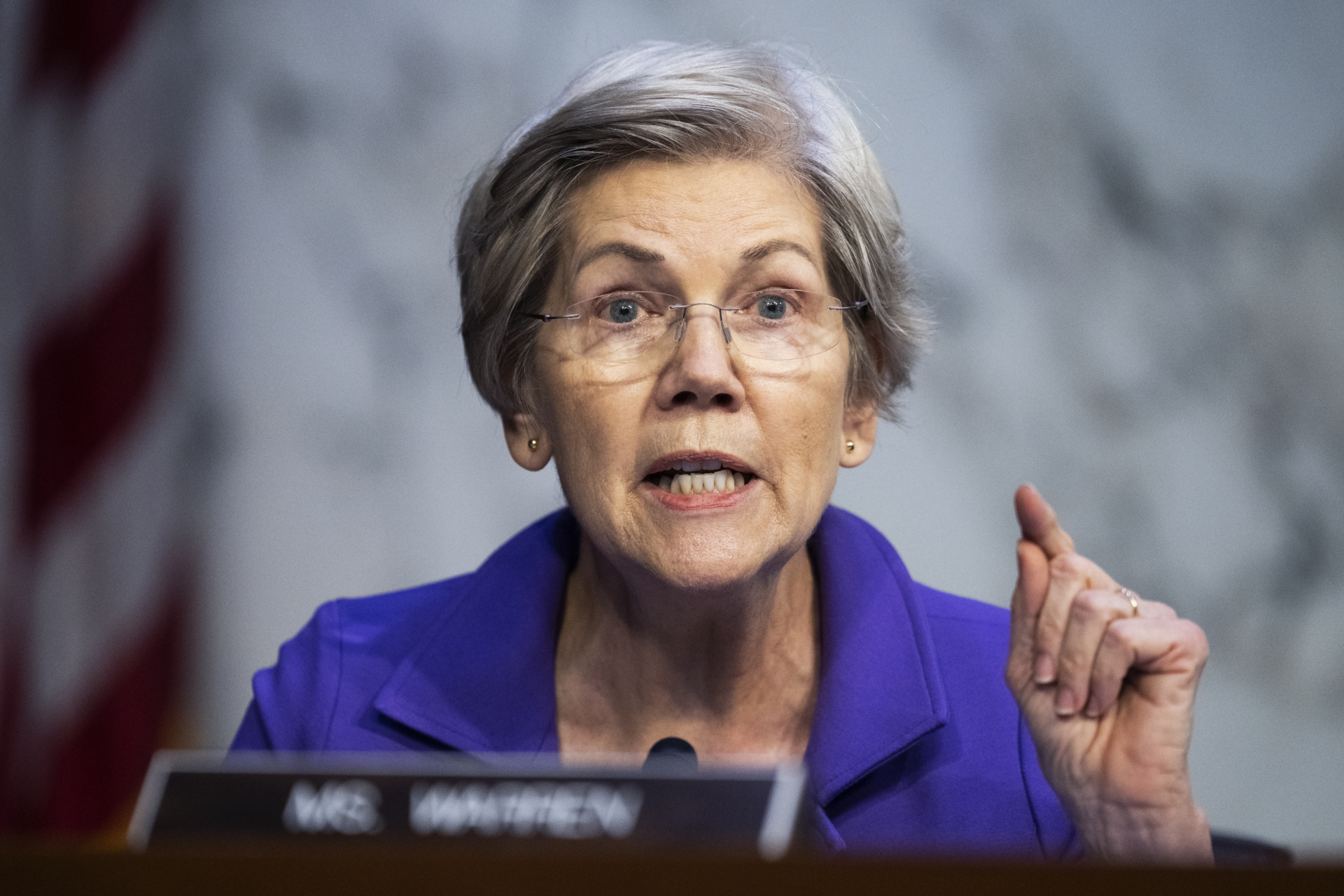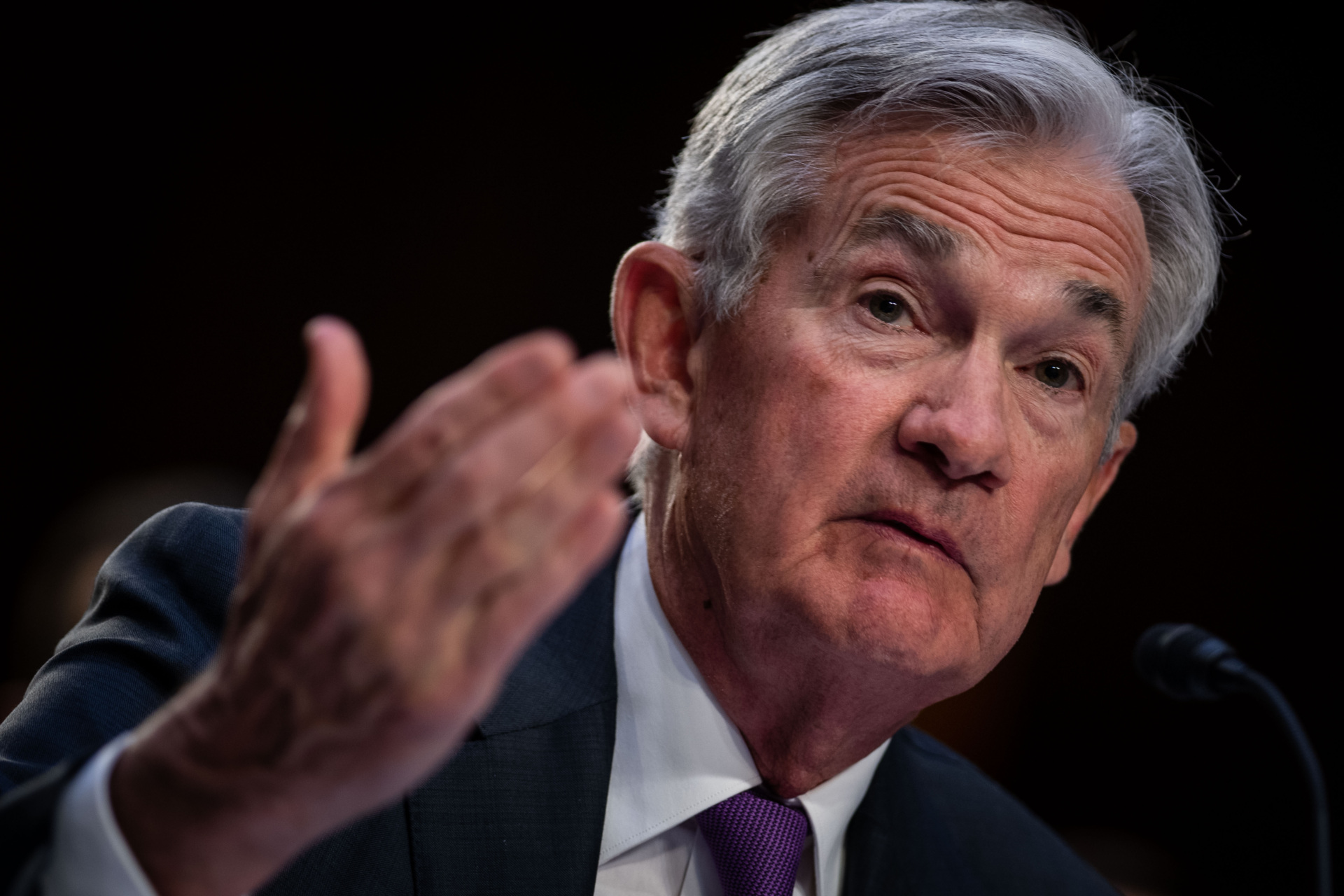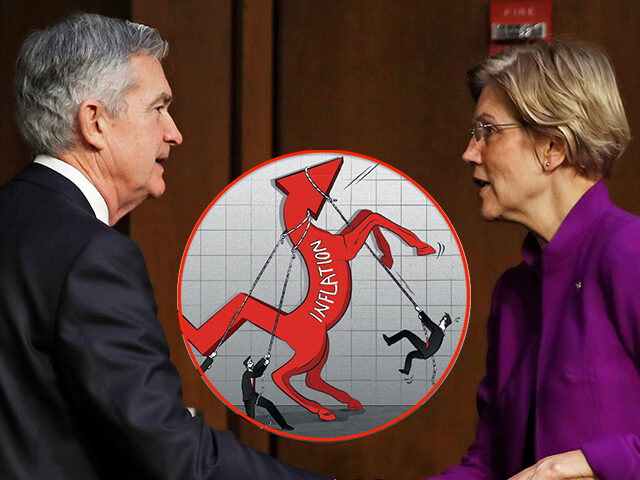Warren Blasts Powell on Inflation
The most entertaining scene in Tuesday’s Senate hearing on monetary policy was also its most enlightening, highlighting two opposing views of inflation and the underlying mechanics of the U.S. economy.
Sen. Elizabeth Warren (D-MA) came to Federal Reserve Chair Jerome Powell‘s semiannual appearance before the Senate Banking Committee prepared for battle. While most of the senators on both sides of the aisle praised the Federal Reserve chairman’s handling of interest rate policies this past year, Warren accused Powell of misdiagnosing the cause of inflation and putting the livelihoods of millions of Americans needlessly at risk.
Describing the Fed’s eight hikes over the past 12 months as “the most extreme rate hike cycle in 40 years,” Warren peppered Powell with questions about the effects of these hikes on American employment. She pointed out—correctly—that the forecasts of Fed officials at the December meeting of the Federal Open Market Committee (FOMC) see unemployment rising to 4.6 percent by the end of this year, a full percentage point higher than it is today. That’s about two million more people out of work.

Sen. Elizabeth Warren (D-MA) questions Federal Reserve Chair Jerome Powell during the Senate Banking, Housing, and Urban Affairs Committee hearing on March 7, 2023. (Tom Williams/CQ-Roll Call, Inc via Getty Images)
Powell: We’re Not Targeting Higher Unemployment
Powell denied that the Fed was “targeting” an increase in the unemployment rate, but this is a bit of rhetorical sleight-of-hand. The Fed’s Summary of Economic Projections says it contains forecasts that Fed officials believe are consistent with the appropriate stance of monetary policy. So, when Fed officials penciled in a 4.6 percent unemployment rate for the end of year, they were saying that’s where they think unemployment should be so long as the Fed pursues the right policies.
This does not quite mean that Fed officials want unemployment to be 4.6 percent. It means they think that is the realistic unemployment rate that will accompany the monetary policy they expect. So, it would be fair to say the Fed looks at the rise in unemployment as a necessary component of its program to tame inflation.
Unemployment Is Likely Going Even Higher Than That
If anything, the Fed’s outlook may be too optimistic.
The December projections showed that Fed officials also forecast inflation dropping down to 3.1 percent by the end of the year and the federal funds rate rising to around 5.1 percent—just 50 basis points above where it is now. It is increasingly apparent that the fed funds rate will likely have to climb higher than that—and the unemployment rate will likely have to go higher than 4.6 percent—if inflation is really going to come down from the 5.4 percent rate recorded by the personal consumption expenditure price index in January.
Powell made it very clear that he regards a move up to 4.6 percent unemployment—and possibly higher—more than an acceptable trade-off for bringing down inflation.
“I would say that even four and a half percent unemployment is well better than most of the time for the last 75 years,” Powell said.
Pushed by Warren on the cost to the two million workers who would lose their jobs in that scenario, Powell shot back: “Will working people be better off if we just walk away from our jobs and inflation remains five, six percent?”

Federal Reserve Chair Jerome Powell testifies before the Senate Banking, Housing and Urban Affairs Committee on March 7, 2023. (Kent Nishimura/Los Angeles Times via Getty Images)
A Conflict of Visions About the Cause of Inflation
What really divides Powell from Warren, however, is deeper than just the acceptability of two or three million Americans losing their job to restore price stability. It is a view of what is causing inflation.
The Fed believes that the core driver of inflation right now is an imbalance between supply and demand, driven by excess demand for labor. Since the labor supply has proved resistant to expansion—with the labor force participation rate remaining depressed—the Fed believes that the only way to address this imbalance is to reduce labor demand.
Warren’s list of inflation’s causes is very different. She blames the war in Ukraine, supply chain kinks, and price gouging. So, from her point of view, not only is tightening monetary policy unlikely to reduce inflation, it is needlessly inflicting harm on working Americans.
Although she did not explicitly make the point on Tuesday, Warren’s view would support the idea of fighting inflation by excess taxing corporate profits, instituting price controls, and increasing government supervision of supply chains. This, rather than interest rate policy, is how certain parts of the American left now would fight inflation.
As we’ve pointed out before, the bulk of the evidence now shows that somewhere between three-quarters and two-thirds of inflation is being driven by excess demand. Only a quarter to a third is rooted in supply problems, with just a tiny and ever shrinking fraction of that related to the war in Ukraine. Price gouging plays no role whatsoever.

COMMENTS
Please let us know if you're having issues with commenting.